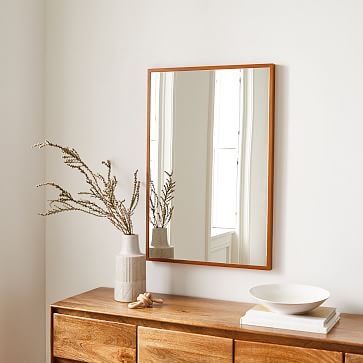The mirror, a reflective surface that reflects light and images, has been used for centuries as both a practical and decorative object. From ancient times to the modern day, mirrors have played a vital role in our lives, serving as tools for grooming, self-expression, and interior design.
History and Evolution of Mirrors
The history of mirrors dates back to ancient civilizations, when mirrors were often made from polished metals such as copper, bronze, or silver. These early mirrors were often small and distorted, but they were still prized possessions. Over time, mirrors evolved to become larger, clearer, and more affordable. The invention of glass mirrors in the 13th century marked a significant advancement in mirror technology, leading to the widespread use of mirrors in homes and public spaces.
Types of Mirrors
Mirrors come in a wide variety of styles, sizes, and shapes to suit different needs and aesthetics. Some of the most common types of mirrors include:
- Full-length mirrors: Full-length mirrors provide a complete reflection of the body and are often used in dressing rooms or bedrooms.
- Wall mirrors: Wall mirrors are mounted on a wall and can be used to add light and a sense of space to a room.
- Over-the-mantle mirrors: Over-the-mantle mirrors are placed above a fireplace and can be a focal point in a living room or bedroom.
- Vanity mirrors: Vanity mirrors are designed for use in bathrooms or dressing areas. They often have built-in lights and magnification features.
- Decorative mirrors: Decorative mirrors are designed to add style and interest to a room. They can come in a variety of shapes and sizes, and may be embellished with intricate designs or patterns.
Mirror Materials
Mirrors can be made from a variety of materials, including:
- Glass: Glass is the most common material used for mirrors. It can be plain or etched with designs.
- Metal: Metal mirrors are often used in modern or industrial-style interiors. They can be made from various metals, such as steel, iron, or brass.
- Wood: Wooden mirrors can add a warm and natural touch to a room. They are often framed with wood or have a wooden backing.
Choosing the Right Mirror
When selecting a mirror, consider the following factors:
- Size: The mirror should be the right size for the space where it will be placed.
- Style: The mirror’s style should complement the overall décor of the room.
- Functionality: Consider whether you need a mirror with specific features, such as built-in lighting or magnification.
- Placement: The placement of the mirror can have a significant impact on the appearance of a room. Consider the lighting and the focal point of the space when choosing a location.
The mirror is a versatile and functional piece of home decor that can add both style and functionality to any room. By carefully considering your needs and preferences, you can choose the perfect mirror to complete your space.

